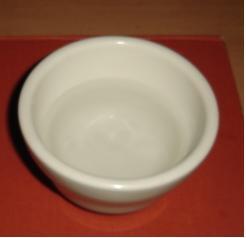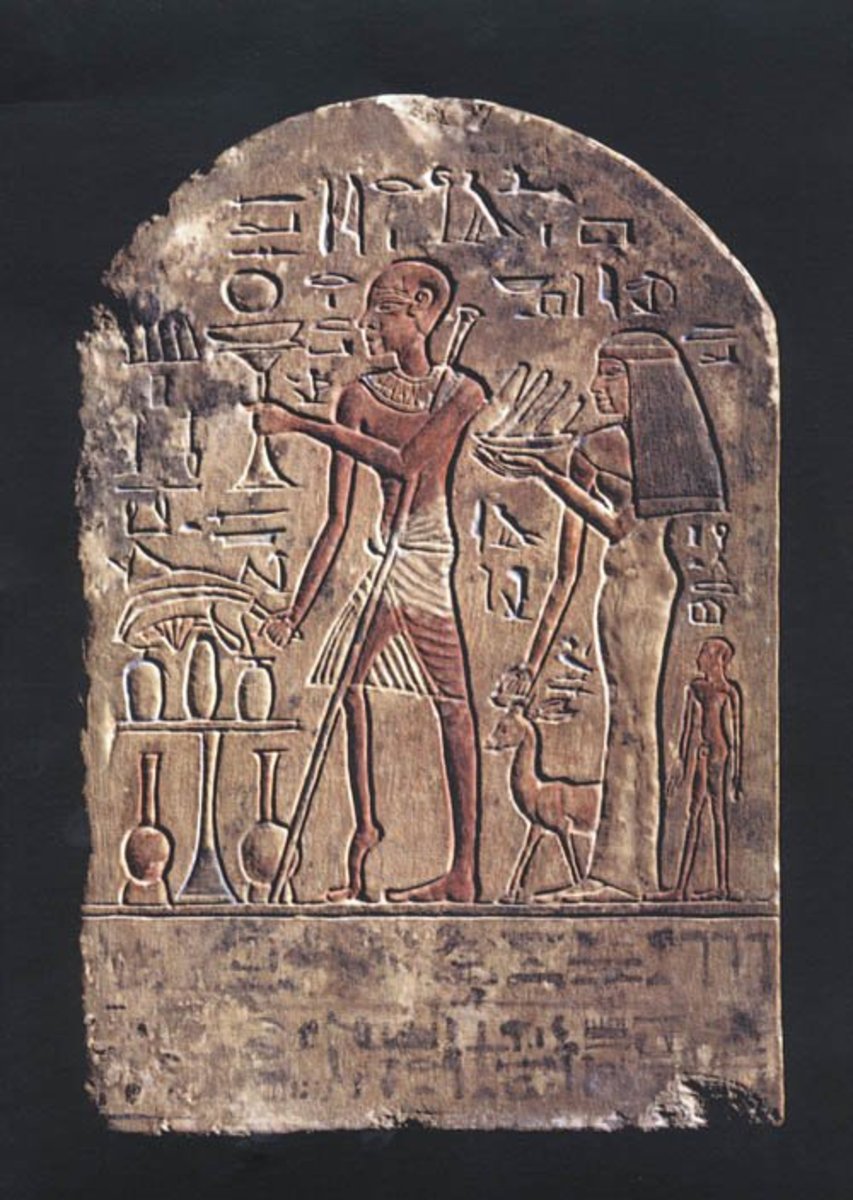Salk Polio Vaccine: How the Shape and Size of Killed Polio Virus Incite Immunization
Invisible poliovirus in a clear solution that Dr. Salk and his team worked on

The shape and size of killed poliovirus incite the immune system to prevent infection with polio
By Conrado D. Fontanilla
Old belief
Only weakened, but live, microbes can provide vaccination.
Such was the prevailing belief when Dr. Jonas E. Salk started, in 1948, his research to come up with a vaccine against the polio virus. This belief was started and proven by Edward Jenner who used cowpox microbe to vaccinate against smallpox; proven by Louis Pasteur who vaccinated against rabies; proven by Robert Koch who vaccinated against tuberculosis. It was advocated by Dr. Albert Sabin who had more experience than Dr. Salk in medical research.
But Dr. Salk had a hunch that killed poliovirus could provide vaccination against the bug. Dr. William Park, director of the bureau of laboratories for the New York Department of Health, and his assistant, Maurice Brodie, earlier tried in 1935 to use killed virus but without success. Dr. Thomas Francis, Jr. and Dr. Salk were successful in coming up with a vaccine against H1N1, responsible for the Spanish flu pandemic of 1918; they adopted and improved upon the idea of using killed virus. This feat bolstered Dr. Salk's confidence. Now the challenge of the polio epidemic in the United States that struck since 1916 loomed larger owing to the ballooning toll of polio from 27,000 in 1916 to 57,879 in 1952. The challenge was all the more formidable because Dr. Sabin had launched his experiments with live attenuated virus. And the National Foundation for Infantile Paralysis (NFIP), proclaimed as such by President Franklin D. Roosevelt, a victim of polio himself, announced that whether using a live or dead virus it would be offered to the public whichever proved effective first. NFIP funded Dr. Salk's research.
In 1954, the Salk killed-virus polio vaccine was launched. It proved effective in providing vaccination ahead of the vaccine using attenuated live virus invented by Dr. Sabin. In 1955, Dr. Jonas E. Salk wrote an article published in the Scientific American, April issue. He wrote of ‘theory’ and ‘immunological principle’ of the vaccine but he did not elaborate a formal theory of killed-virus polio vaccine.
It is possible that in other articles published in scientific journals he elaborated such a theory. However, I have not taken hold of any. How comes it that killed-virus polio vaccine work?
In the first place, what is a theory? A theory consists of concepts and relationships between concepts (Einstein, A. Ideas and Opinions. 1954).
Einstein also wrote: “We have become acquainted with concepts and general relations that enable us to comprehend an immense range of experiences and make them accessible to mathematical treatment. In a certain sense these concepts and relations are probably final” (Einstein. A. “On the Generalized Theory of Gravitation.” Scientific American, 1950 in: Microsoft Encarta 2009).
In theory-making, we will start with a hypothesis (scientific guess), identify concept(s), transform concepts into definite descriptions, identify relationship(s), and draw sense-experience statement(s) that can be verified by observation or experiment. Verification of sense-experience statement(s) makes them false or true. When a hypothesis has a corresponding verifier it turns into a theory. In layman’s language, a hypothesis verified as true becomes a theory. We will rely on a review of scientific literature or results, arguments, and experiments done earlier by scientists.
Hypothesis: The shape and size of killed poliovirus incite production of antibodies.
The concepts are: shape, size, killed, poliovirus, and antibodies.
The concepts are transformed into definite descriptions as follows:
Poliovirus – it consists of RNA (ribonucleic acid) that when it infects a cell replicates as RNA. The new RNA is released that infects another cell. Poliovirus is unlike a retrovirus (another kind of virus) that reconstructs its DNA with the DNA of the host (infected) cell and controls the DNA of the host cell.
Shape -- poliovirus is icosahedral with 5-fold, 3-fold, and 2-fold symmetry (Fraenkel-Conrat, H. and R.R. Wagner. Comprehensive Virology.1981:105).
"Most, if not all, of the polygonal viruses are icosahedral, like a geodesic dome, they are formed by equilateral triangles, in this case 20."
Size -- "The protein and nucleic acid constituents have properties unique for each class of virus; when assembled, they determine the size and shape of the virus for that specific class.
"Viruses vary in diameter from 20 nanometres (nm; 0.0000008 inch) to 250–400 nm" (Encyclopedia Britannica 2009).
Killed -- the poliovirus is dead; it has no ability to infect or multiply.
Antibody – a weapon produced by T-killer cells, a component of the immune system. It latches on the surface of a virus and changes its shape. How does the antibody find the virus? It has been marked with an antigen which the macrophage, another component of the immune system, had plucked from the virus. The antigen is displayed on the surface of the virus. The antigen alerts the T-helper cells, patrolling throughout the body, to send a signal to the T-killer cells inciting them to multiply fast. One T-killer cell can clone itself into millions of T-killer cells (Reiter, R.J., Ph.D. and J. Robinson. Melatonin. 1995:42). The first chemical produced is the prostaglandin that call into action neutrophils that “eat” viruses. Macrophage also eats, literally, virus.
The poliovirus is an RNA. It is still unsettled whether RNA is alive or not. However, it is agreed that it is a message. The poliovirus becomes alive only in a live cell. It can only get inside a cell that fits its shape and size like a lock and key.
“When canyon and peak meet, they lock together like pieces of a puzzle. The virus has a foothold. Quickly it injects itself through the cell membrane” (Jaret, P. “Our Immune System, the Wars Within.” National Geographic. 1986. June).
An antibody latched on the surface of the poliovirus changes its shape and size such that no cell of the host person fits the poliovirus. Therefore, the poliovirus cannot infect. A vaccine provides primary prevention, that is, it prevents poliovirus from taking a toehold on a person.
The relationship is: incite. T cells are components of the immune system. "One T cell may be subtly altered so that it responds to the polio virus, another to hepatitis-B...." (Reiter, R.J., Ph.D. and J. Robinson. Melatonin. 1995:42). There are two kinds of T cells: T-killer cell, and T-helper cell. T-helper cell is a patrolman and a general (coordinator of the battle against foreign bodies) at the same time.T-killer cell is a combatant soldier. The shape and size of poliovirus trigger a jump in the population of T-killer, by cloning, with their antibodies. T means thymus gland; T-killer cells originate from the bone morrow, migrate to the thymus gland and develop there. Macrophage is a B cell; it originates from the bone marrow and develops there.
Sense-experience
“A theory by itself means nothing experimental... it is only when something is deduced from it that it is brought within the range of our material senses,” according to Norman Campbell (Campbell, N. What is Science? 1921:157). [Campbell used theory and hypothesis interchangeably.] A hypothesis is verified true if a statement that arises from it corresponds to experience.
Along this vein, Einstein wrote:
"The skeptic will say: 'It may well be true that this system of equations is reasonable from a logical standpoint. But this does not prove that it corresponds to nature.' You are right, dear skeptic. Experience alone can decide on truth. Yet we have achieved something if we have succeeded in formulating a meaningful and precise question. Affirmation or refutation will not be easy, in spite of an abundance of known empirical facts. The derivation, from the equations, of conclusions which can be confronted with experience will require painstaking efforts and probably new mathematical methods" (Einstein. A. “On the Generalized Theory of Gravitation.” Scientific American, 1950 in: Microsoft Encarta 2009).
Drawing a statement of fact from a theory was done by Einstein. His general theory of relativity, published in 1915, was expressed in mathematical terms. The test for a mathematical construct is validity. But how do we know that it is true? This question could be answered by the verification of a statement of fact. Einstein derived a statement of fact from his general theory of relativity by saying, among others, that the universe is expanding. The American astronomer Edwin Hubble discovered the redshift in 1929. The redshift verifies the expansion of the universe.Of course, there are other proofs of the general theory of relativity like the bending of light in the vicinity of a large body, verified in May 1919 by Sir Arthur Eddington, a British astronomer (Levy, D. Cosmology101. 2003: 204-211).
A similar statement of fact can be found in the case of the hypothesis of killed-virus polio vaccine. Salk himself provided that as follows:
“The theory of the killed-virus vaccine rests on the well-established fact that an inactivated virus, though it has lost the power to infect or multiply, may still act as an antigen stimulating the body to produce antibodies against specific virus” (Salk, J. E. “Vaccines for Poliomyelitis.” Scientific American April. 1955. in Microsoft Encarta 2009).
By "inactivated" Dr. Salk meant dead because he qualified it as having "lost the power to infect or multiply;" in addition, he was opposed to Dr. Sabin's idea of live, attenuated virus.
The verifiable statement is: A killed virus acts as an antigen stimulating the body to produce antibodies against specific virus.
The above statement of fact was verified.
In the polio season (April to November) of 1954, 1.8 million American children were given shots of killed-virus vaccine developed under the leadership of Jonas Salk financed by the National Foundation of Infantile Paralysis which was established by Franklin Delano Roosevelt, former president of the United States, who was struck by polio in 1921. On April 12,1955, in celebration of the death anniversary of Roosevelt, who died of hemorrhagic stroke in 1945, the results of the final trial on humans was announced by Dr. Thomas Francis, Jr., director of the Poliomyelitis Vaccine Evaluation Center of University of Michigan:
‘”In the placebo-controlled areas, the poliomyelitis vaccination was 68 percent affective against polio Type I, 100 percent effective against Type II, and 92 percent effective against Type III.”’ (Kluger, J. Splendid Solution, Jonas Salk and the Conquest of Polio. 2004:294).
The above report of Dr. Francis verifies the statement of fact derived from the hypothesis. This is equivalent to the discovery of redshift by Hubble that verified the statement of fact derived from the general theory of relativity. Verification of redshift is proof that the general theory of relativity is true.
Einstein and Campbell did not use the nomenclature we are using here. For example, the general theory of relativity was outrightly called "theory" although Einstein was aware of the philosophy and methods of science. The practice in agricultural research with which I am familiar, having been graduated with the degree of Bachelor of Science in Agriculture, starts with a hypothesis or statement of the problem.
Certainly, Salk had hypotheses in mind while developing the killed-virus polio vaccine. For one, when confronted with the problem of how to concentrate poliovirus he had a "hypothesis" that the red blood corpuscles of live chick inside the shell, serving as culture medium, attracts poliovirus to congregate. Then the blood would be washed away, leaving the clumps of virus. His hypothesis was proven; he was the inventor of that method. The use of the centrifuge was dispensed with. And he was stubborn in his belief, which we call hypothesis, that killed poliovirus would make a vaccine. The prevailing belief then was that only live virus could make a vaccine.
What we are trying to do is formulate a theory along the definition given by Einstein and supplemented by Campbell. This one should be formulated in the form of proposition, and with the minimum vocabulary, that is, the fewest words or terms as recommended by Bertrand Russell, a Nobel Prize winner in Literature (Philosophy) in his book "Human Knowledge: Its Scope and Limits" published in 1947. We go through a journey of discovery.
Type I poliovirus was “the one most likely to lead to epidemics and paralysis of the limbs. Type II was a milder virus than Type I, the likeliest to lead to asymptomatic cases, though in the weak or unlucky it could still paralyze or kill. Type III was the rarest of all and that was a very good thing since it was the one most likely to lead to bulbar polio, the infection of the medulla oblongata, the lower bulb of the brain, leading to paralysis of the diaphragm, destruction of breathing, and so often death….” (Kluger, J. Splendid Solution, Jonas Salk and the Conquest of Polio. 2004:99-100).
The original shape and size of the poliovirus must be maintained. The original shape and size of a poliovirus killed by formaldehyde is maintained. Salk used formalin to kill poliovirus; formalin is 61 percent formaldehyde.
“…Thus the antigenic properties of formaldehyde-treated proteins or viruses appear not to differ greatly from those of the original material. It is for this reason that formaldehyde treatment has been and remains the preferred method of producing ‘killed vaccine,’ which are biological materials the toxicity of which has been abolished without loss or change of their serological properties” (Fraenkel-Conrat, H. and R.R. Wagner. Comprehensive Virology.1981:256).
“…Serology most often deals with the analysis of reactions between antigens and antibodies in the blood and body tissues….” (Microsoft Encarta 2009).
Formaldehyde causes cross-linking of molecules resulting in hardening (Cranton, E. MD and A. Brecher. Bypassing Bypass. 1984:205). Hardening is the reason why the original shape and size of killed poliovirus is maintained.
White blood cells contain the components of the immune system: phagocytes, T-killer cells, T-helper cells, macrophage, T-suppressor cells that put a break on the immune system when the enemy had been defeated.
When the enemy had been defeated, the T-suppressor cells signals the T cells and B cells to cease and desist. Most of the T cells and B cells die off during and after the battle with the poliovirus. Some of them remain alive as Memory cells. Memory cells recognize any poliovirus that may return. Memory cells incite the immune system to mount the same battle against the poliovirus as it did in the first encounter. Immunity is now established. One might say that Memory cells are the bases of vaccination.
However, Memory cells are subject to ageing, that is, they are attacked by free radicals. Such attacks are countered by booster shots of the vaccine.
A free radical is any atom, or ion, or molecule, or fragment of a molecule that has an unpaired electron in its outermost orbital (Pierce, J. Ph.D. Heart Healthy Magnesium. 1986). That unpaired electron is unstable that grabs an electron from a neighboring molecule that comprise the immune system. When a free radical grabs an electron it causes an injury. An injured T-killer cell, or T-helper, or macrophage, or neutrophil is ineffective. That is why there is a need for booster shots of killed-virus polio vaccine to incite a new batch of immune cells to combat the poliovirus when the old batch had been weakened or destroyed by free radicals. Examples of free radicals are molecular oxygen, superoxide, ozone and singlet oxygen. Derivatives are called reactive oxygen species (ROS) like hydrogen peroxide, hydroxyl, alkoxy radical, nitrosamine, nitrobenzene, carbon tetrachloride and other derived from pesticides, herbicides, and fungicides. ROS are not technically free radicals but they behave the way free radicals do.
Another tack to maintain Memory cells is to control the population of free radicals with antioxidants. Still another way is to take melatonin which strengthens Memory cells (Sahelian, R., MD. Melatonin: Nature's Sleeping Pill. 1995). The effect of melatonin had been shown in animal studies. Melatonin-treated mice produced "more than twice as many antibodies as the untreated mice -- proof of a more aggressive immune response" (Reiter, R.J., Ph.D. and J. Robinson. Melatonin. 1995:41). Melatonin, being a natural tranquilizer, remedies stress that leads to production of free radicals.
The concept of free radicals causing disease was not yet around during the time of Salk. It was only in 1962 that Dr. Denham Harman made an interpretation that free radicals cause aging and disease. This is a breakthrough in medicine like the germ theory of diseases inaugurated by Pasteur in 1881-84.
Salk provided a means to protect the shape of killed virus from destruction by bacteria and fungus and to protect the vaccinated person from infection by these microbes. He mixed merthiolate in his formula. However, merthiolate could also cause injury. If merthiolate “didn’t find any of the bacteria or fungi it had been added to the mix to kill, it might simply go to work on the inactivated viruses themselves, damaging their structure just enough that the immune system would fail to recognize them. This would not directly infect any children with polio, but it would fail to protect them from a wild infection that might later come along….” (Kluger, J. Splendid Solution. 2004:278). The remedies were to add merthiolate the last “to limit the amount of time in which it could do its damage” and to store the Salk killed-virus polio vaccine in a low temperature.
The technology of Salk’s killed-virus polio vaccine is not patented since its development was funded by National Foundation of Infantile Paralysis proclaimed as such by then President Franklin Delano Roosevelt. No royalty was collected from the pharmaceutical companies that manufactured and distributed the Salk polio vaccine. The formula was given for free to other countries all over the world to enable them to manufacture their own Salk killed-virus vaccine. But some countries in Europe could not manufacture their own vaccine in a short notice that they imported from the United States. Early on, the demand in the U.S. was so great that she had to suspend exportation of Salk vaccine.
The killed-virus polio vaccine was not without a rival. There were proponents of the live-virus polio vaccine, like Dr. Albert Sabin. His invention was given a chance in Russia and Czechoslovakia in 1958-59 and in the United States in 1960-61. One of its drawbacks is that the weakened live virus can mutate into a virulent one and infect a person who came into contact with the person who had been vaccinated. How the live-virus polio vaccine works is another story.
The Centers for Disease Control of the United States “to eliminate the final lingering cases of polio in the United States, the live vaccine invented by Albert Sabin would be phased out and replaced by the killed formulation invented by Jonas Salk….” (same source as above, page 319).
The transition was completed on the first day of 2000.
Hypothesis graduates into a theory
In our discussion, the hypothesis we started with, if the foregoing arguments were valid and the drawn statement of fact were true, now turns into a theory as follows:
"The shape and size of killed poliovirus incite production of antibodies."
The data, arguments and elaborations in fleshing up, as it were, the hypothesis into a theory also serve to explain why the killed-virus polio vaccine works.
New entries as of November 7,2012
Hepatitis B vaccine gives circumstantial evidence to the above theory.
The hepatitis B virus is composed of DNA and protein coat. DNA can be separated from the coat. A gene of hep B virus controls the production of protein coat. This fact was made use of by biological engineering, specifically recombinant DNA. This gene was isolated, incorporated into yeast cells. Yeasts with genes of hep B protein coat were mass produced, harvested, the protein coats separated and used in making hep B vaccine. This hep B vaccine has been in use since 1986 (Offit, P., MD and L.M. Bell, MD. Vaccines: What Every Parent Should Know. 1999:77). [Hep B virus causes inflammation of the liver, jaundice, fatigue, vomiting, liver cancer and cirrhosis.]
To review: the hep B vaccine consists of protein coat only. It has no DNA; put another way it is dead. The protein coat incites the production of antibodies thus immunization. It is equivalent to the killed poliovirus used as vaccine against the polio bug.






